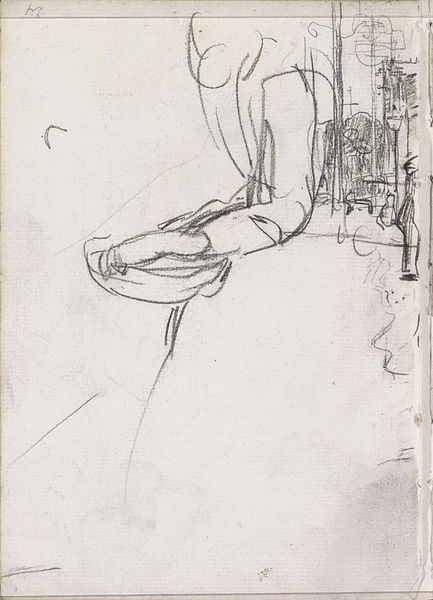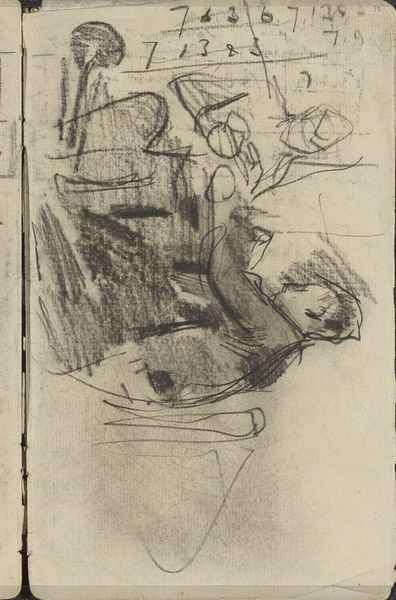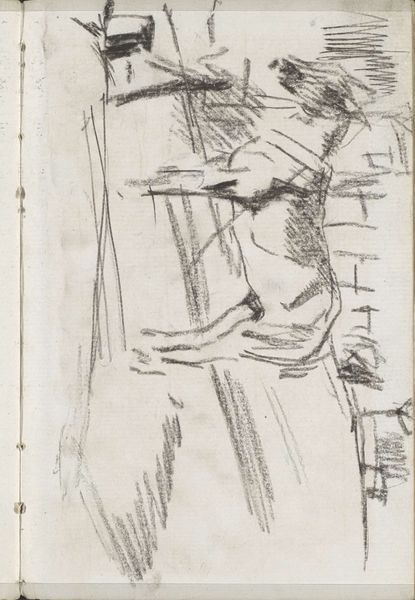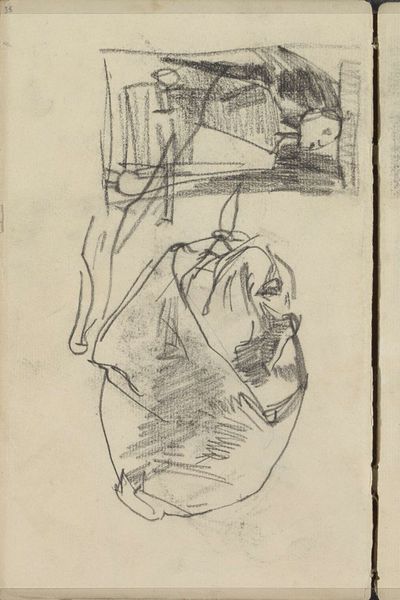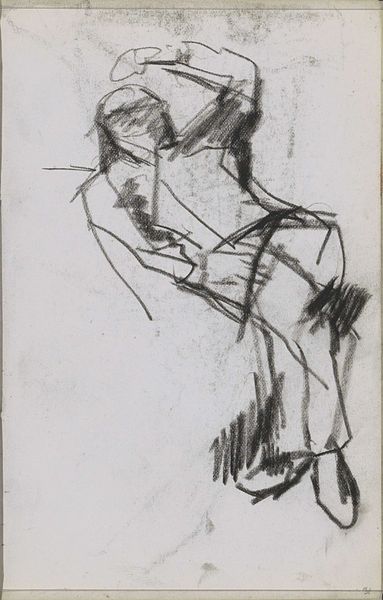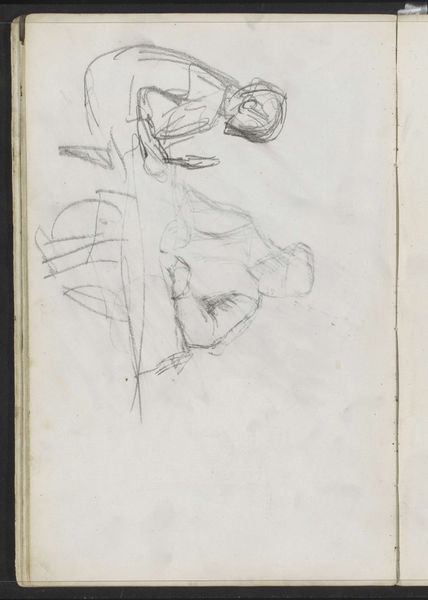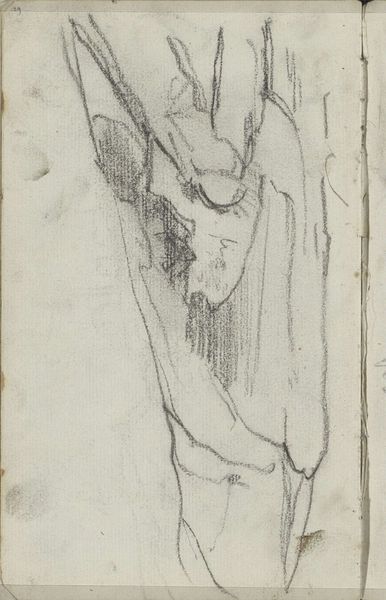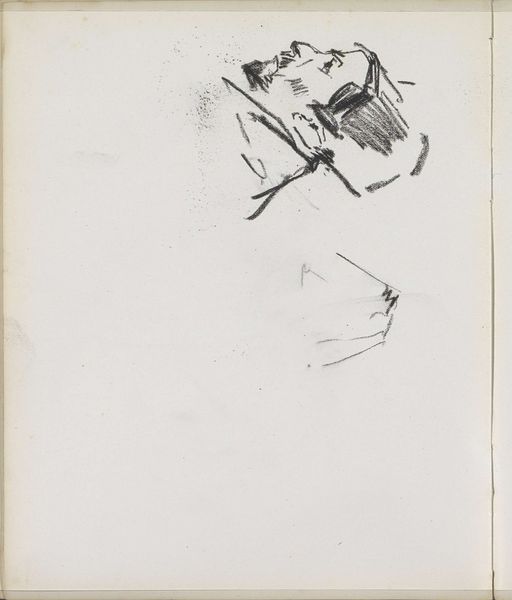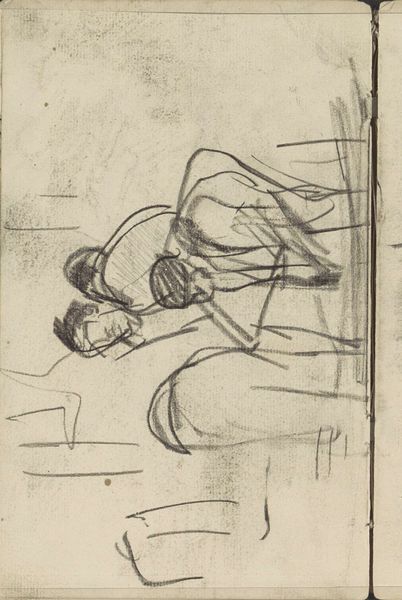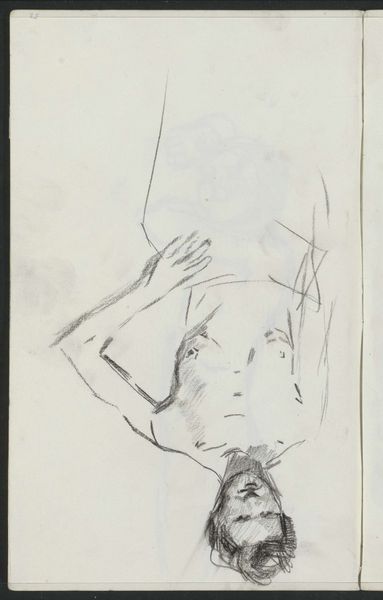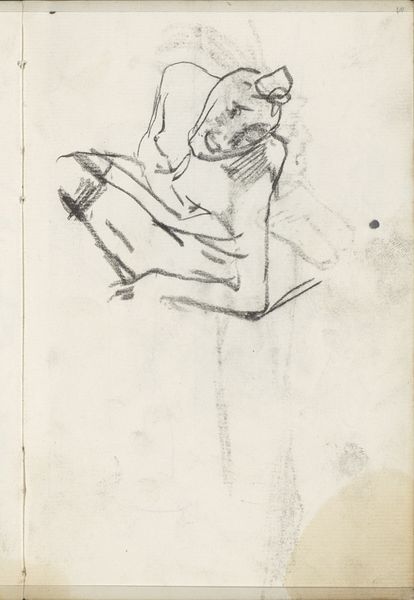
drawing, pencil, graphite
#
portrait
#
drawing
#
impressionism
#
pencil sketch
#
figuration
#
pencil
#
graphite
#
realism
Copyright: Rijks Museum: Open Domain
Editor: So, this is *Slapende jonge vrouw* by George Hendrik Breitner, made around 1886. It’s a pencil sketch on paper, and the subject appears to be a young woman asleep. There's a vulnerability to it, don't you think? Like a stolen moment of peace captured on the page. What do you see in this piece? Curator: What *don't* I see, perhaps, is the question! It’s interesting how Breitner uses such economical lines to convey so much…weariness, surrender. For me, the real story lies in those unfinished edges. Does that evoke a dreamlike, ephemeral quality? It hints at the fleeting nature of youth, of beauty. Do you see it too, the rawness? He's not trying to prettify, is he? It’s…honest. Editor: Definitely. I see what you mean about the unfinished lines contributing to that ephemeral feel. And that honesty makes it more compelling, I think, than a highly rendered, polished piece might be. Curator: Exactly. It almost feels intrusive, like we’re glimpsing a private moment we shouldn’t be seeing. It begs questions, doesn’t it? Who is this girl? Why is she so tired? Where is she finding sleep in a world that probably wasn’t kind? But then I wonder...am I layering my own projections onto her slumber? Are *we* all doing that a little bit? Editor: I think that’s part of the power of the piece, though. It's not just about *her* story; it prompts *us* to reflect on our own experiences. I see empathy. Curator: And a beautiful study of light. Even in monochrome, notice the way light models the form and hints at shadow. Yes, I agree, a little empathy in graphite – not something you often see served up! It is a nice feeling when art speaks to you in unexpected ways, revealing facets of your own perspective. Editor: Absolutely. It makes you wonder what other hidden stories are waiting to be discovered in these old sketchbooks.
Comments
No comments
Be the first to comment and join the conversation on the ultimate creative platform.
